
How To Find and Understand Space-A Flight Schedules
Ready to master the art of Military Space-A travel? From bases to bucket list destinations, we’ve cracked the code on reading flight schedules like a pro. Whether you’re planning your next adventure or just curious about this incredible perk, we’ve got the insider tips you need to make the most of every opportunity.
saltyvagabonds
Destinations
Travel Tips
Planning
About us
Saltyvagabonds
Flying Space A can feel like being part of a secret club. Everyone on TikTok says, “You make it look easy,” but there’s a lot more to it. I’m here to help you service members understand and decode Space A flight schedules.
With my experience as a pilot, aircraft dispatcher, and Space A passenger, we’ll guide you to have a smooth and stress-free journey on military flights during ordinary leave, emergency leave and morale leave. If you have not read our “How to Fly Military Space Available (Space-A) Flights Guide” check that out for more tips and essential info.
How Do I Find The AMC Flight Schedules
Finding space-available flights and schedules can vary depending on what you’re searching for, but a good tip is to type “Space A Travis” or “Space A Joint Base Andrews” into the search bar. The top result is usually the AMC passenger terminal website, like the one for Travis Air Force Base.
The Amc website has a passenger terminal directory where you can find all the terminals by region. This directory helps you see where they fly so you can start planning your adventure. Remember, each location is run by different commands with different missions, so keep that in mind when making your plans.
The terminal page will give you important details like regular commercial phone numbers, a DSN number for on-base calls, an email address, and specific location info, including the AMC Gram for updates and helpful info to that particular location.
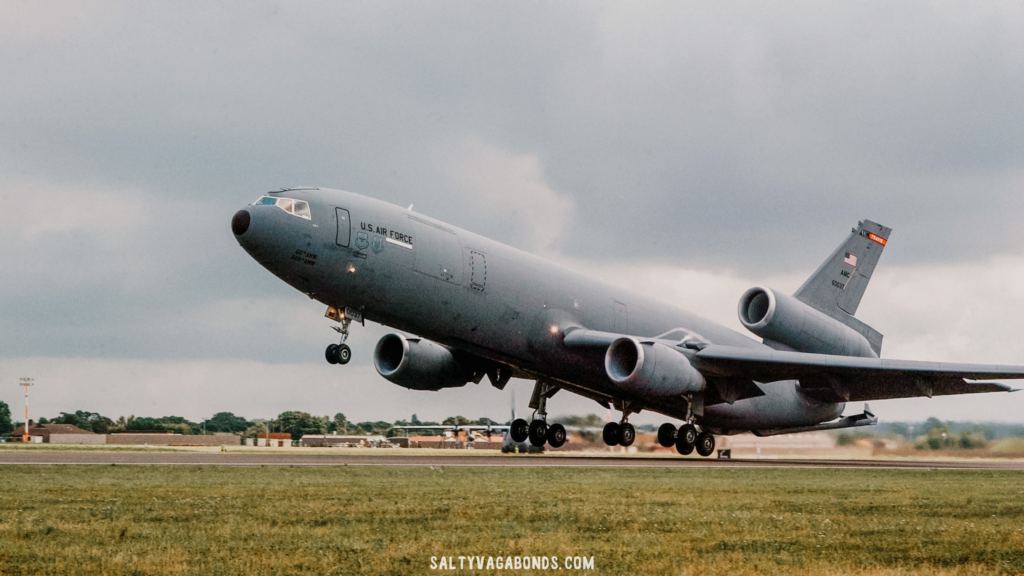
Clicking the 72-hour button will load a PDF with the flight schedule for that terminal. If the PDF doesn’t load right away, it means the schedule is being updated. Just give it a bit of time, and it will appear.
You can find all this information on the specific military passenger terminals page, but if you want the most up-to-date details, it’s best to call the terminal. Sometimes the pages, especially the 72-hour schedule, can be outdated.
72-Hour Flight Schedules (3 Day)
The 72-hour schedule includes some crucial info, and you’ll often see a note like “ALL FLIGHT SCHEDULES ARE SUBJECT TO CHANGE WITHOUT NOTICE.” This is the reality, flights can change suddenly. For example, we missed a flight to Joint Base Charleston because the crew decided to leave 24 hours early and the schedule was not updated.
On the schedule, you’ll find sections for roll call, destinations, and available seats. Each of these serves an important purpose, and I’ll explain them below.
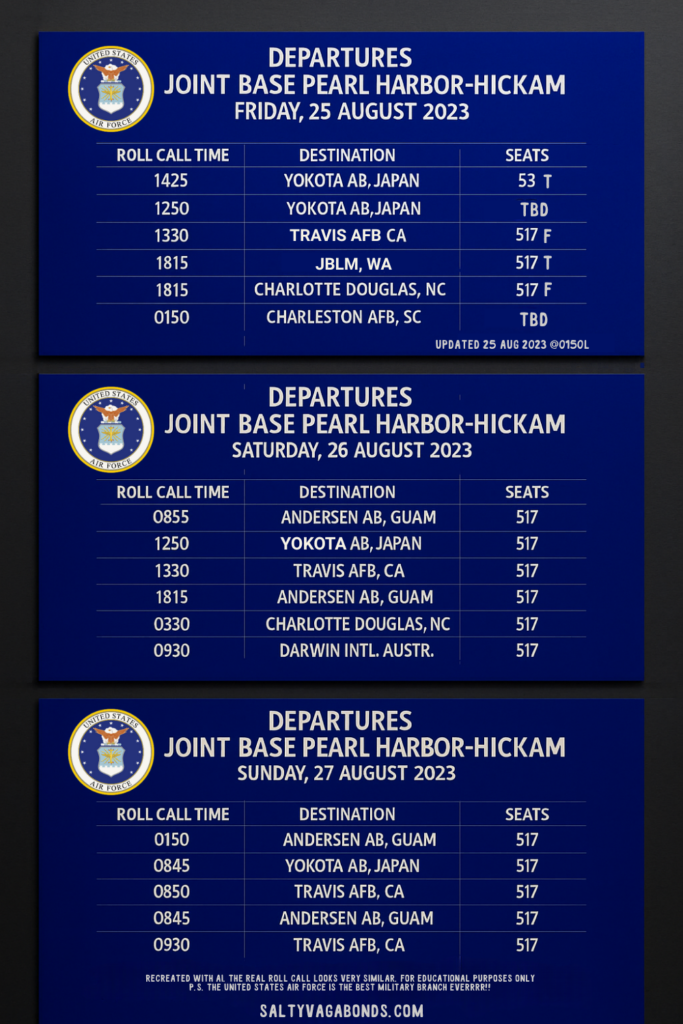
Roll Call
This is the time you need to be there with all your travelers, bags, military ID, and travel documents. If you’re not present, you won’t be counted or added to the flight manifest, which is really important. Also, make sure you arrive before the roll call times so the customer service desk can check you in and add you to the present list.
Destination
This section shows the destination the airplane will be flying to. If multiple locations are listed, the plane is scheduled to stop at all of them, following the corresponding roll call times. However, keep in mind that this can change based on the needs of the Department of Defense.
For example, we were heading to Travis AFB but had to divert because the airfield was under Low Instrument Flight Rules (LIFR). So, we went to Oakland to refuel and waited for the fog to clear so we could land. This added an extra 2 hours, but we eventually made it to our final destination.
We’ve also had some major letdowns looking at destination lists, like the time we drove all the way from Orlando to Charleston hoping to catch a flight to Lima, Peru. Spoiler alert: it didn’t work out.
Another time, we were in Kadena trying to manifest to Whidbey Island, but we couldn’t because the flight wouldn’t clear customs there, even though the crew had a 38-hour rest stop in Hawaii. The kicker? We weren’t allowed to clear customs in Hawaii ourselves, so we were stuck, left at the mercy of regulations that aren’t exactly transparent for Space-A passengers. That one really stung.
So long story short? Always call the terminal. The destination list doesn’t always give the full picture. Ask about customs clearance, crew rest, fuel stops, everything. It could save you from wasted time, missed flights, and some serious travel heartache.

Seats
This section shows the number of seats “available” for space available travel. This is the heart of Space-A travel, it all comes down to whether there are available seats for you and your family.
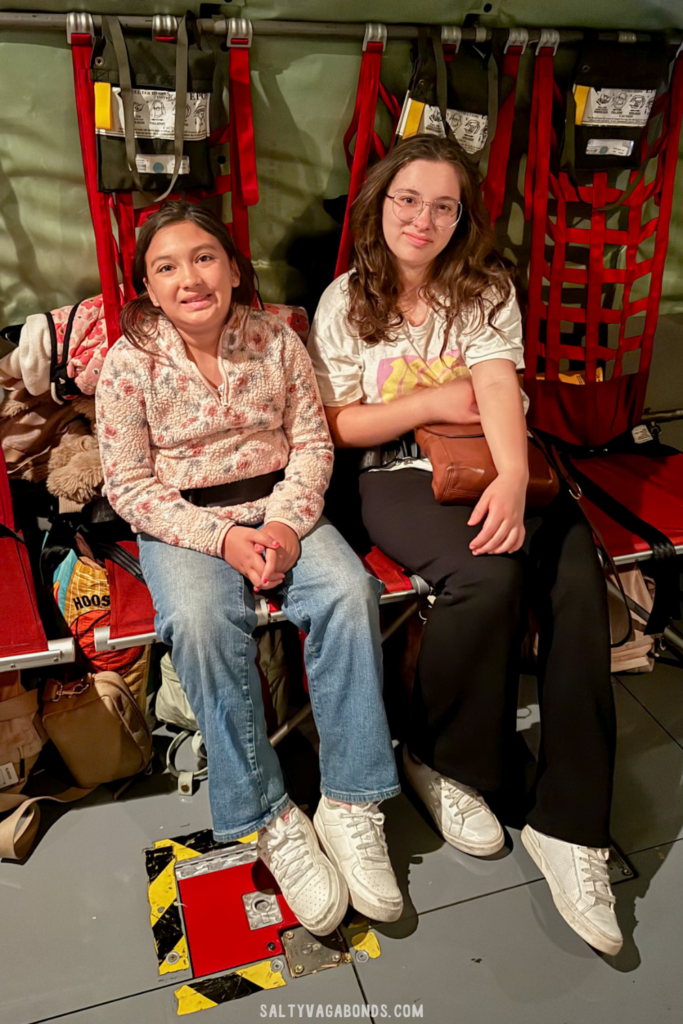

However, it gets more complicated. Even if there are open seats, if you’re not in the highest priority category, your family might not become eligible to board that flight. Learn about categories here.
If you see a number in this section, it doesn’t guarantee that you and your dependents will get on the flight. Pay attention to the small legend at the bottom of most schedules, which explains, “Seats released: T= Tentative, F= Firm, TBD= To Be Determined.” For example, the schedule might show “73F” in the seats box.
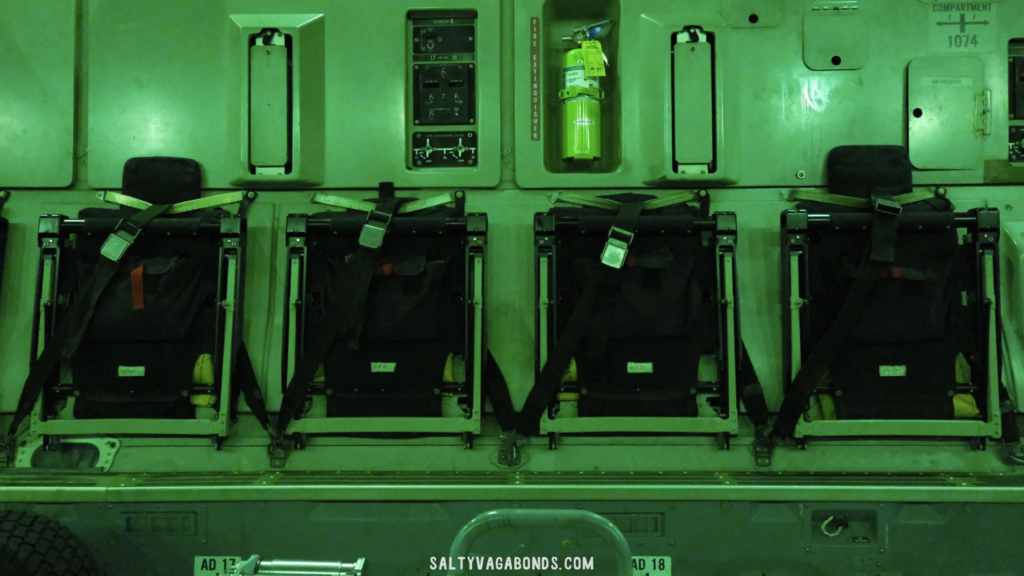
If you talk to enough folks, you’ll hear it again and again, seat categories can change or be pulled at any time. We once competed for a flight out of McChord, and the crew didn’t accept Space-A passengers until they were literally on the ramp refueling before heading to Arizona.
Nothing’s guaranteed until you’re in the air and past the PNR (point of no return). That’s our motto, especially for ocean crossings or even long-haul land legs.
What Does “T”, “F” and “TBD” Actually Mean?
As an aircraft dispatcher, “T” means a few things to me, but mainly it signals that you can expect this number of seats with about a 75% chance of it staying the same, though it could still change. “F” or “Firm” means that’s the final number of seats ATOC (Advanced Tactical Operations Center) will release, either for weight and balance reasons or because the remaining seats are reserved for military members.
Now for the infamous “TBD”, To Be Determined. This means they don’t yet know how many seats will be available because they haven’t done the weight and balance calculations or figured out the load capacity for passengers and their bags. Think of it as a placeholder until they confirm the weight of the cargo and how many personnel will be on the military aircraft.

Thruload passengers
We experienced this while flying from Guam to Japan. The flight was delayed due to maintenance, and even though the passengers were manifested already to go to Yokota, Japan. With them being manifested and the plane being delayed a day for maintenance in Guam, they held their seats. When it was time for them to resume their travel, the 72 hour flight schedule showed an updated at the terminal showing the flight and “Thruload” in the seats area of the announcement.
As random Space A travelers we showed up at roll call and were allowed to compete for and board the flight, even though the “seats” section showed N/A (not available).
Other Information On The Schedule
Virtual Roll Call (VRC)
This means you can compete for a flight by email without being physically present at the air terminal. However, this option is only available at certain locations. If you want to learn more, click here.
Remarks Section or Notes Below The Destination
Some notes sections include important details like baggage weight limits and reminders such as “TOURIST PASSPORT IS REQUIRED FOR ALL SPACE-A PASSENGERS.” This section provides notes that may apply to everyone planning to take the flight.
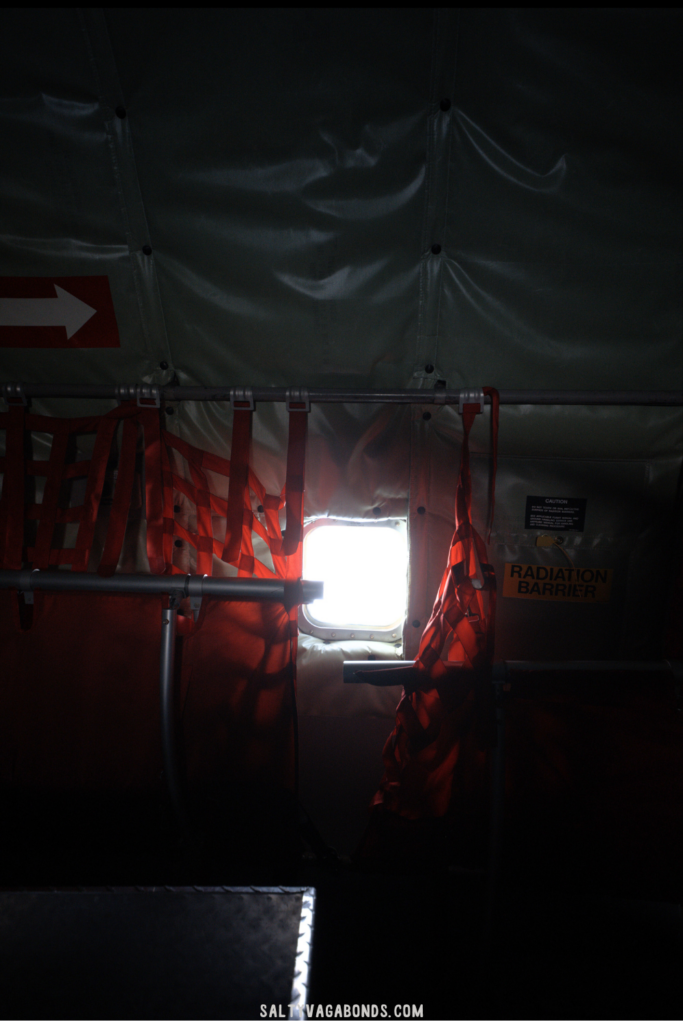
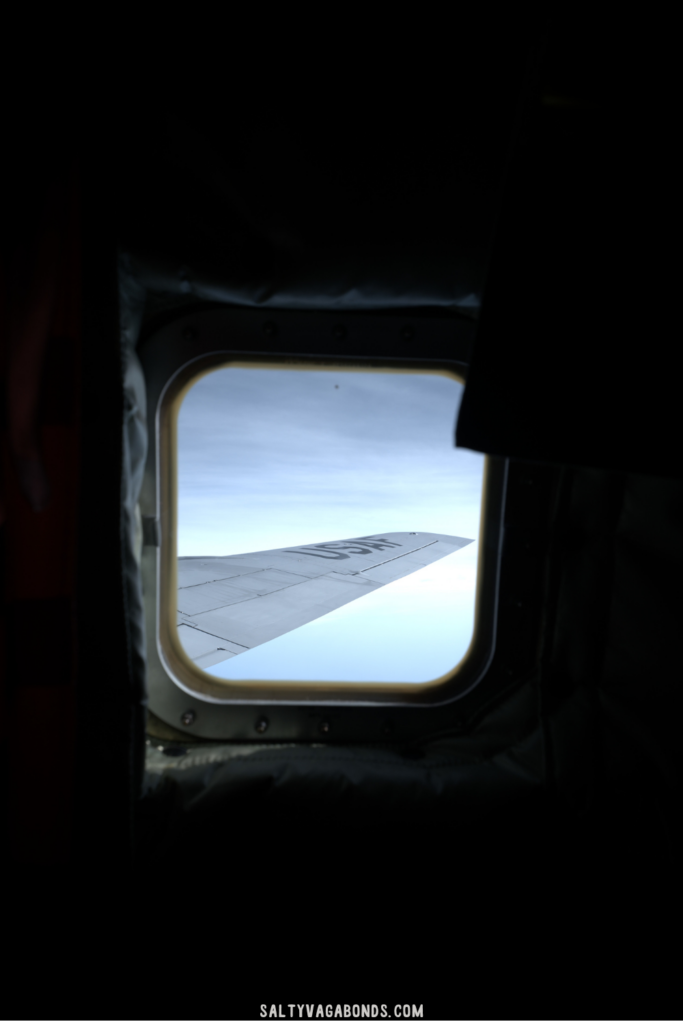
The 30 Day Schedule and The Patriot Express
A Patriot Express flight operates like a commercial airline, such as American Airlines or Delta, and even resembles many commercial flights. It follows Federal Aviation Regulations (FAR) 121 rules, meaning it’s treated as a scheduled airline. This is important because if the plane lands or diverts due to maintenance or other issues, they’re required to provide accommodation and food vouchers, according to FAR 121 rules.
Many AMC terminals operate Patriot Express missions and post a 30-day schedule, so you can plan a bit ahead. The schedules show the date and destination. Once the flight is within the 72-hour window, it will appear on the schedule with the number of available seats.
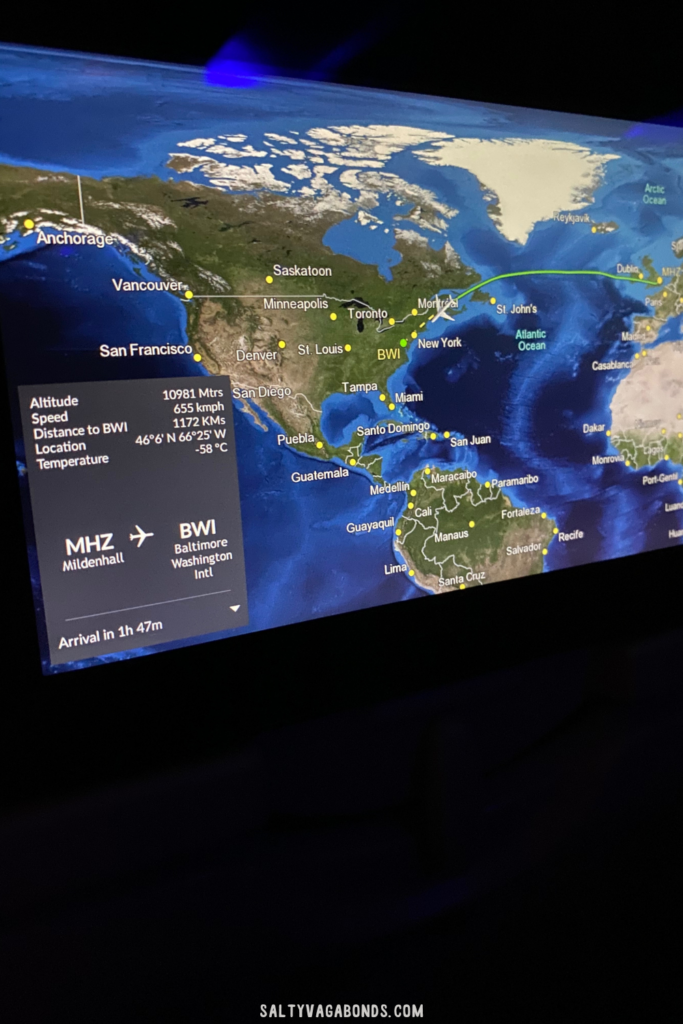

Roll Call Report
The Roll Call Report provides historical data on seats and other details for about the past 7 days at most locations, some may have more, some less. This information can be very useful for understanding how the operation has worked for past flight routes.
Protip:
We use the Roll Call Report to gauge interest and demand for flights to specific locations. It helps us understand the operation better and decide if it’s worth competing for and what the chances might be for upcoming flights.
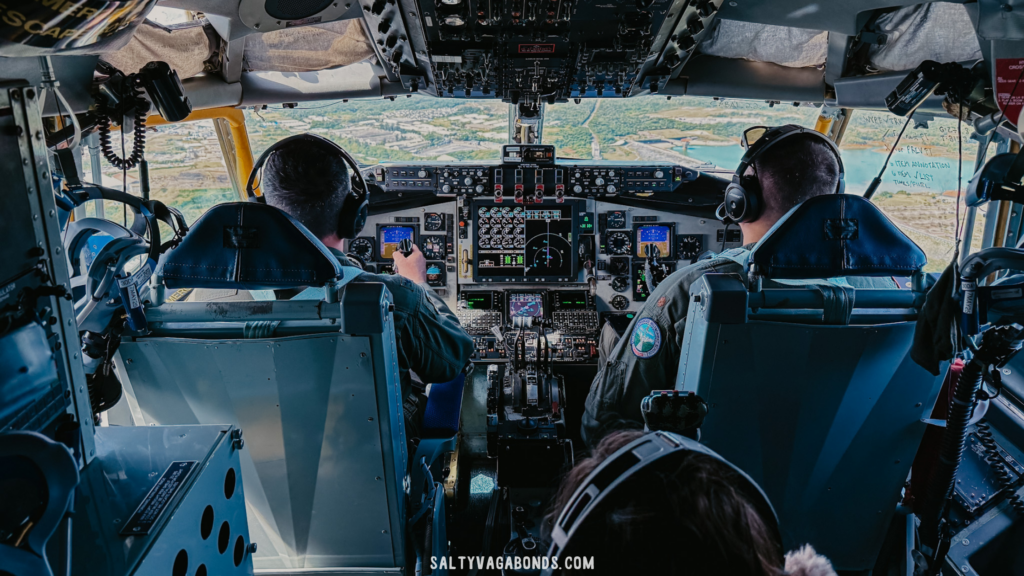
The Roll Call Report Contains This Information
Date
The date on the Roll Call Report is either the flight date or the date of the original roll call. Keep in mind that the flight might have actually departed on a different day. For example, if roll call was done at 11 PM local time, the flight could have left the next day.
Destination
This is straightforward, it’s where military hops are dispatched to.
Seats Released
It means the same thing as the 72-hour flight schedules. On Pearl Harbor Hickam’s report, they use “F” for firm, but not all military Space A terminals follow this method.
Seats Used
This shows how many passengers, or “Souls On Board” (SOBs), used seats for Space-Available travel.
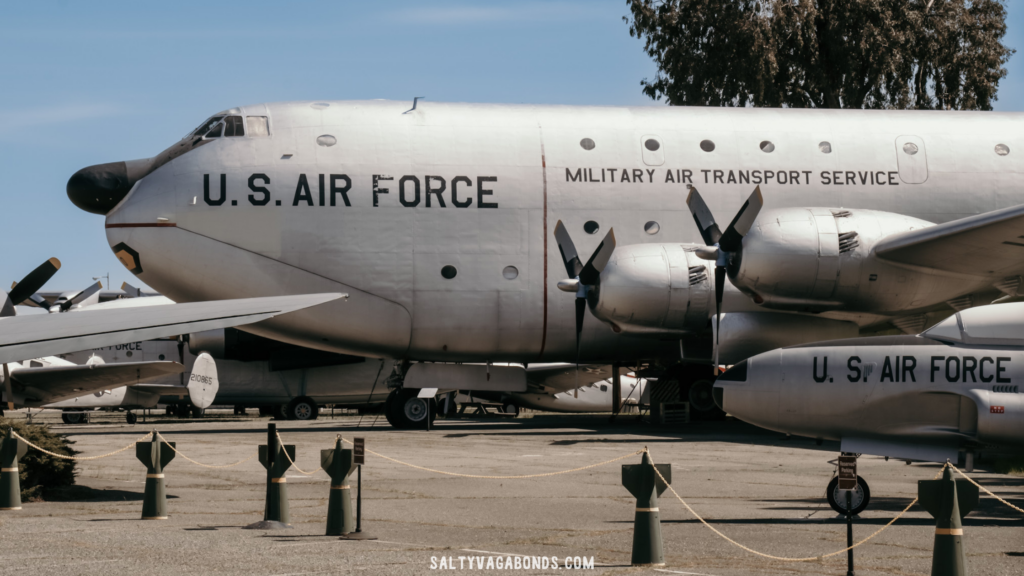
The PAX Selected Area
Lowest Category Selected
They show the lowest Space-A category (e.g., category III or category VI) that was selected for the flight.
Date & Time Sign Up
The passengers selected for the flight have a sign-up date listed. The person with the oldest sign-up date will be shown here. This helps you see how competitive the flight was based on how far in advance the sign-up date was compared to the roll call.
You can sign up for a Space-A flight up to 60 days in advance. If the sign-up date is close to that 60 day mark, it means the flight was very competitive.
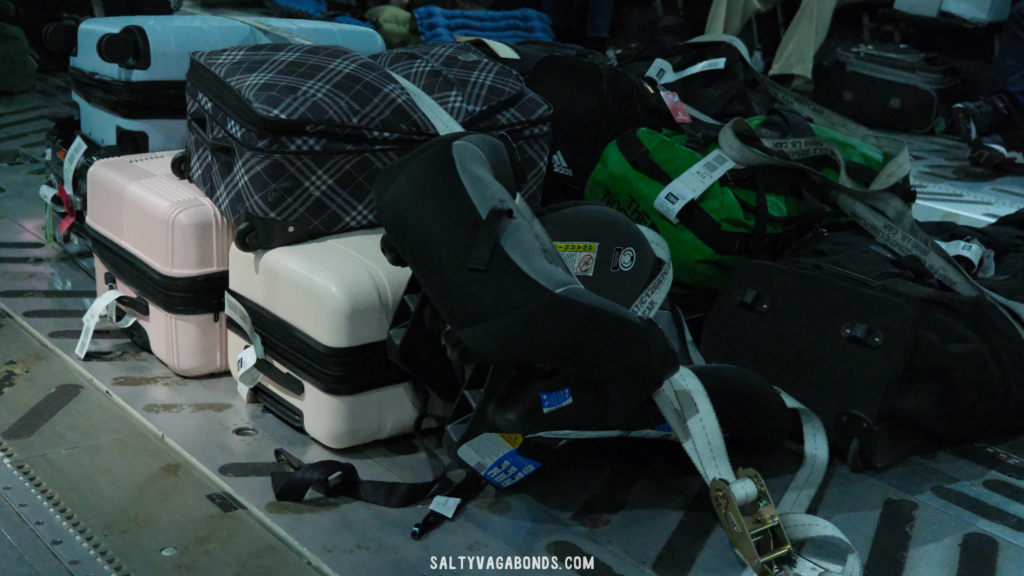
PAX Competed for Flight Area
# Pax
This number represents the passengers who checked in with the customer service desk and were present to compete for the flight at roll call, unless they did a Virtual Roll Call.
Lowest Category
This shows the lowest Space-A category that competed for the flight, ranging from category VI up to category I.
Date & Time Sign-Up
This box shows the most recent sign-up date for passengers competing for this flight.
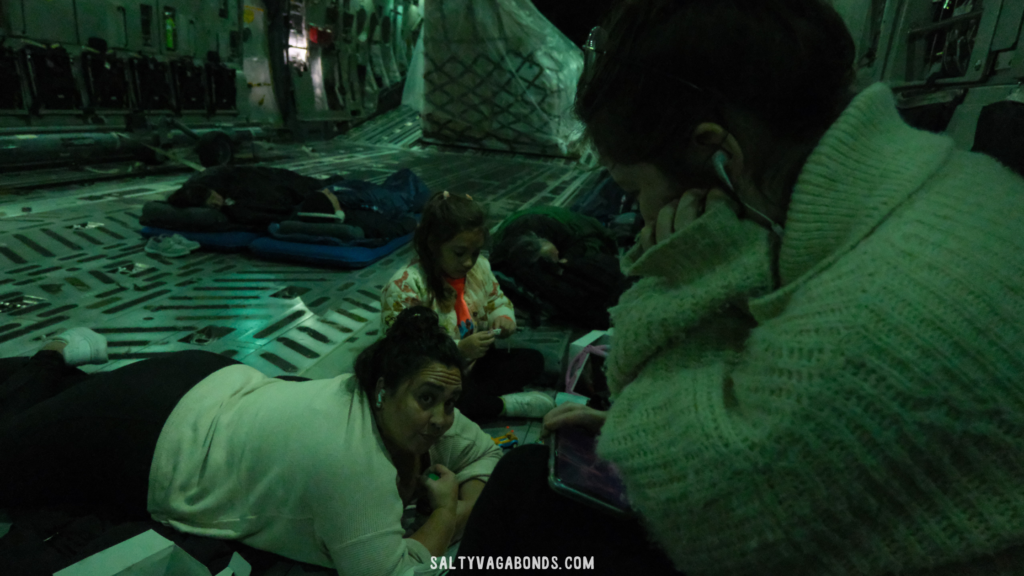
Military Bases Without an Air Mobility Command Website
Some locations, usually Navy bases, don’t have an AMC website. Instead, they use Facebook pages to post the necessary information for catching MAC flights. I’ll list our favorites below:
- NAS North Island
- NAS Whidbey Island
- Joint Base San Antonio
How To Use The Flight Schedules
I’m going to include some theoretical situations to clarify things. During my time as a dispatcher for corporate business jets, the FAA, and Beechcraft, among other commercial aircraft manufacturers, I gained valuable insights into how their operations work.
While the military is quite different, it shares similarities with commercial operations in many ways. Both move cargo, have destinations, and have specific needs. Large cargo airplanes in the military may have dedicated routes, which you can see in the schedules.
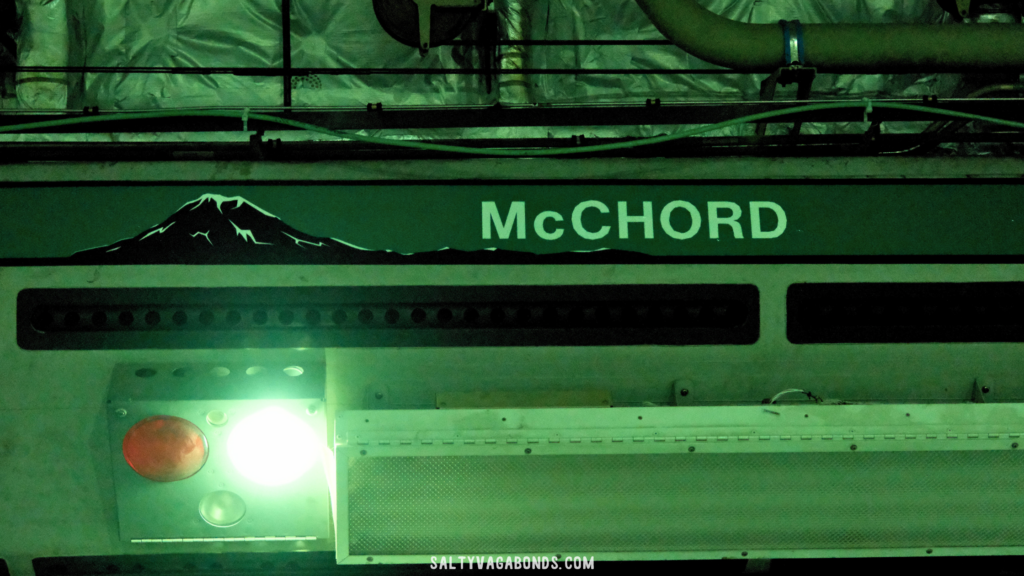
Firstly a Little Helpful Knowledge
Understanding the Rules and Regulations
As an FAA-certified aircraft dispatcher and instrument-rated pilot, staying compliant with Federal Aviation Regulations (FARs) is essential for safe and legal flight operations. Pilots have regulated duty times and limits on how many hours they can fly each day, week, and year. This FAR here provides detailed information on those regulations, which is useful to know for Patriot Express flights and “gray tail” flights.
The Flight Operations Air Force Manual
This manual (can be found here) has two statements that stand out to me and are listed below:
3.1. Crew Rest. Commanders and supervisors will ensure aircrew are provided a 12-hour rest opportunity prior to beginning the flight duty period.
3.4. Maximum Flying Time. Maximum flying time is 56 flight hours per 7 consecutive days,125 flight hours per 30 consecutive days, and 330 flight hours per 90 consecutive days. (T-2).
Note: Maximum flying time may be waived by MAJCOM/A3 when an operational risk management assessment determines that mission requirements justify the increased risk. MAJCOM/A3 may delegate the waiver authority no lower than squadron commander.
Understanding crew duty times is key. If a crew can’t operate a flight longer than 8-12 hours, you might end up stuck at the destination if they hit their limit for the day, week or month. This can show up in the schedule, like a 12-hour gap between arrival and the next departure.
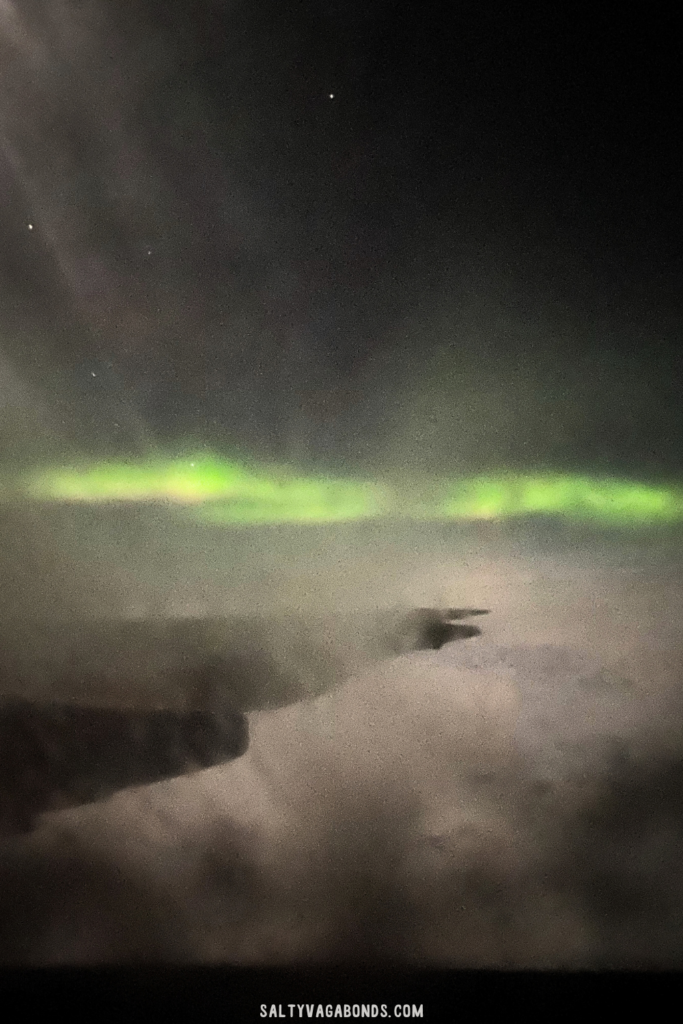
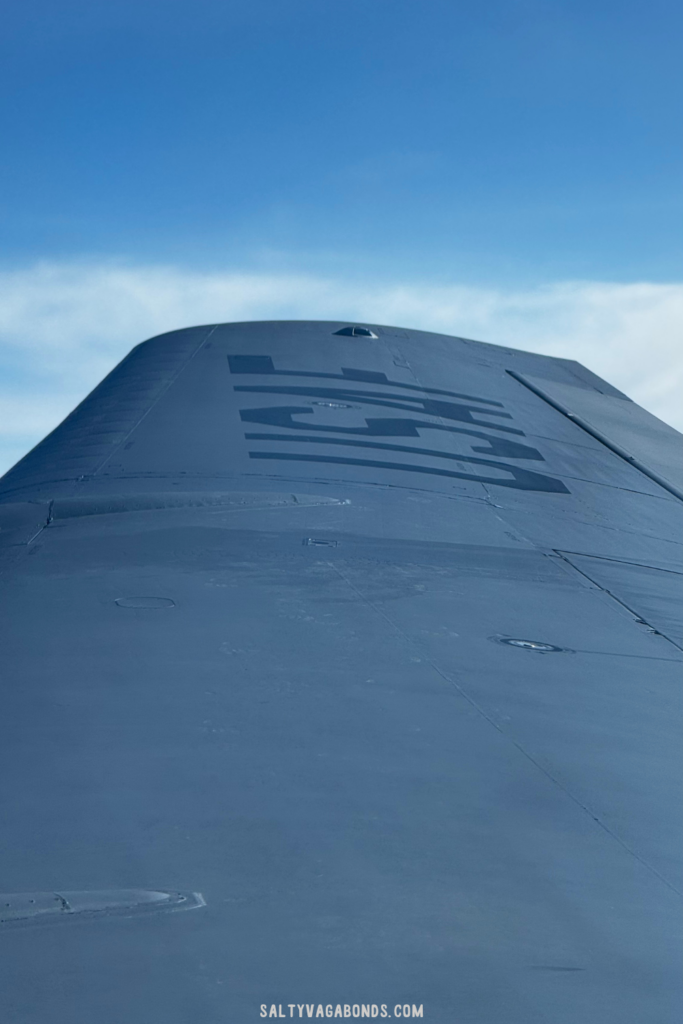
Space A Theoretical Situation
If a flight starts at Travis and is heading to Japan with a stop in Guam, the crew will reach their duty time limit before the flight is completed. Although the plane can keep flying, the crew must change because they’ve reached their maximum flying hours for that day (Crew duty time), as set by their Flight Operations Manual (FOM). But if there’s a standby crew on board, they can swap out and keep the flight moving to Japan without needing a mandatory crew rest period.
To plan your trip, you need to understand flight durations and crew duty times. For example, transport planes typically fly at about 550 knots over the ground. I use Google Maps to measure straight-line distances to estimate flight times.
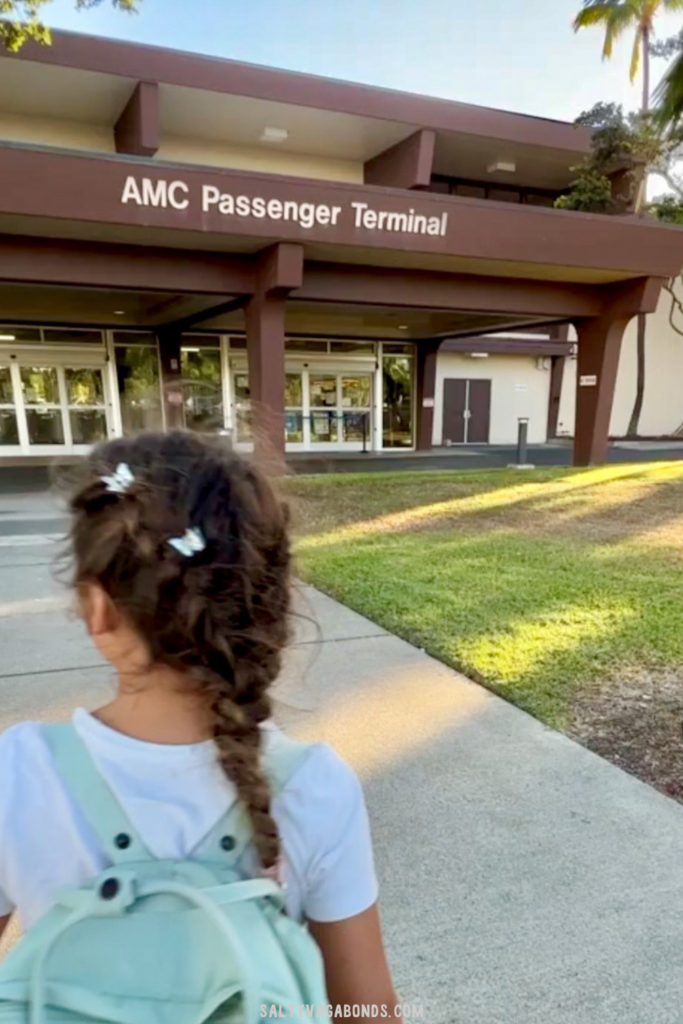

For instance, the flight to Hawaii takes about 4.5 hours and the flight to Guam takes around 6 hours and 45 minutes. Combined, that’s about 11 hours and 15 minutes. This means the crew will need at least 8 hours for rest per the Flight Operations Manual before being on duty for the next flight to Japan.
On the Guam schedule, you might spot a flight to Japan with a roll call time that suggests the crew got ample rest (usually at least 8 hours later). This likely means it’s the same plane and crew heading out the next day.
This is important to know because if you arrive in Guam, the plane might need repairs and could be delayed due to the crew rest rule. So, if you have a connecting flight planned in Kadena or Yokota (for day 2 for example) to Singapore or Korea, you might miss it. This is something to keep in mind, especially if you are planning to do a trip from Travis to Paya Lebar, Singapore.
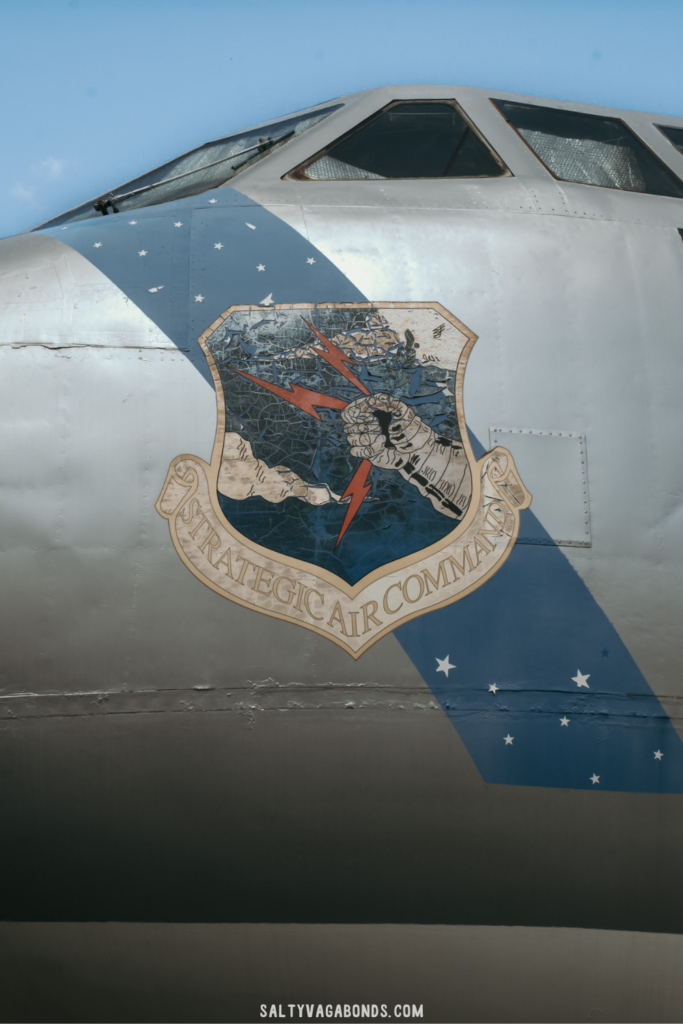

Connecting the Dots: Planning Multi-Stop Space A Trips
The best way to travel to different parts of the world is by keeping an eye on all the schedules for that region. For example, Travis Air Force Base and SeaTac are great for flights to Asia and the Pacific. Norfolk is your go to for Spain, Italy, and Greece, while Baltimore is ideal for getting to Germany.
But if you’re flying on military aircraft, also known as “gray tails,” like we often do, things can get a bit more complicated.
For instance, we took military hops from Travis to Guam, then to Yokota, and finally to Singapore, and it might have seemed like a breeze. I’ll break down how we did it with some examples below.
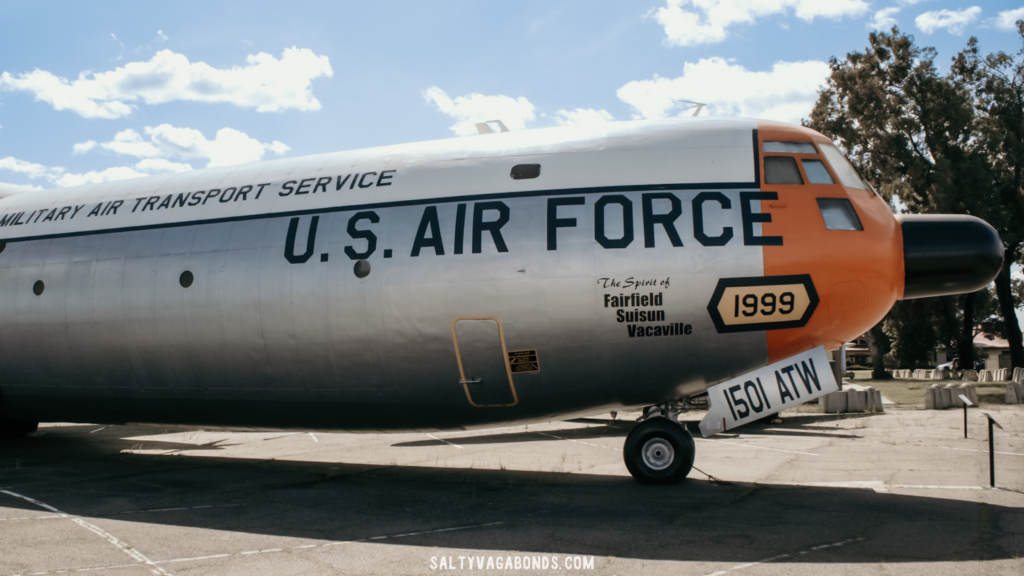
First Step
Try to find out where the airplane you’re trying to catch started its journey. I like to open all of the AMC terminal websites on a tab for the region like INDOPACCOM Terminals so I can look at them all and easily move between them.
What to Remember:
If it’s a plane from Travis, it probably began its trip there and will return to Travis because the crew is based there with their families and will return there. The same idea applies to other locations like NAS Norfolk or JBLM (Joint Base Lewis McChord) and this also applies to commercial aircraft.
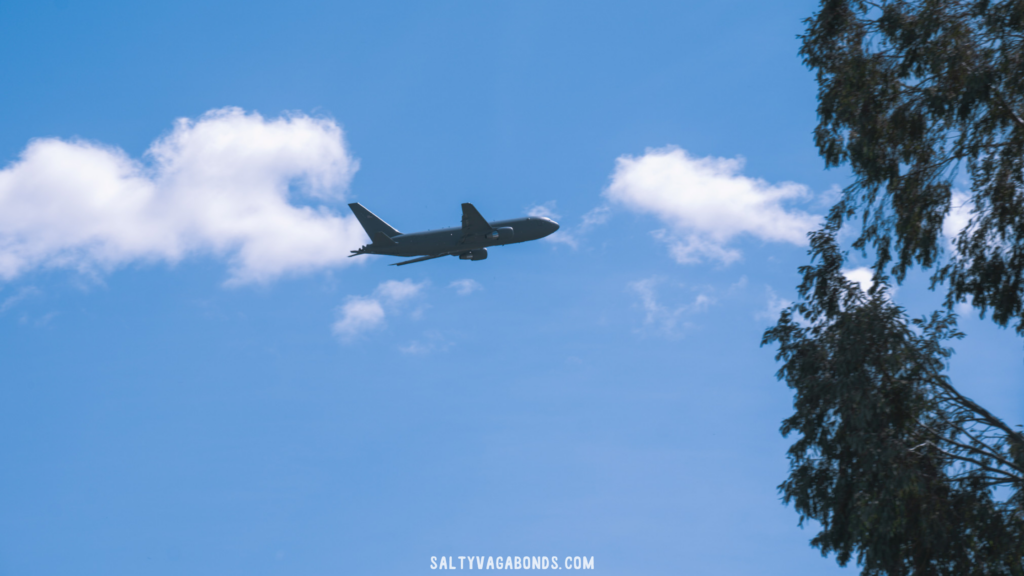
Second Step
Look at all of the schedules in that region and look for patterns and identify those patterns. Some will be really obvious and some will not. The obvious ones will give you an idea of what their dedicated flight route will be.
If you see there’s an overnight stop, which is usually after a long duty day. This is likely because the pilots have reached their maximum flying time for the day. For example, a flight from Travis to Hawaii (this will be a fuel stop) and then to Guam and they will stay overnight in Guam.
As you are looking at all of the schedules you may notice the beginning of a pattern.


Third Step
After checking the Travis schedule in this scenario, then you are to check the Hickam Space-A schedule and then Guam’s schedule. If you notice a roll call time around the time the plane is scheduled to arrive within an hour or two later, there’s a good chance the plane you’re seeing on the schedule might be continuing to the next location.
Fourth Step
Look at the number of seats released. This is noticeable especially with the Patriot Express because sometimes they stop at multiple locations before crossing the ocean.
If the seats released have diminished along the route you may have identified the same airplane. If Travis released 10 seats, then you check the Hickam schedule and the seat released goes down to 5 tentatively this could be the same airplane for a flight going to Guam.
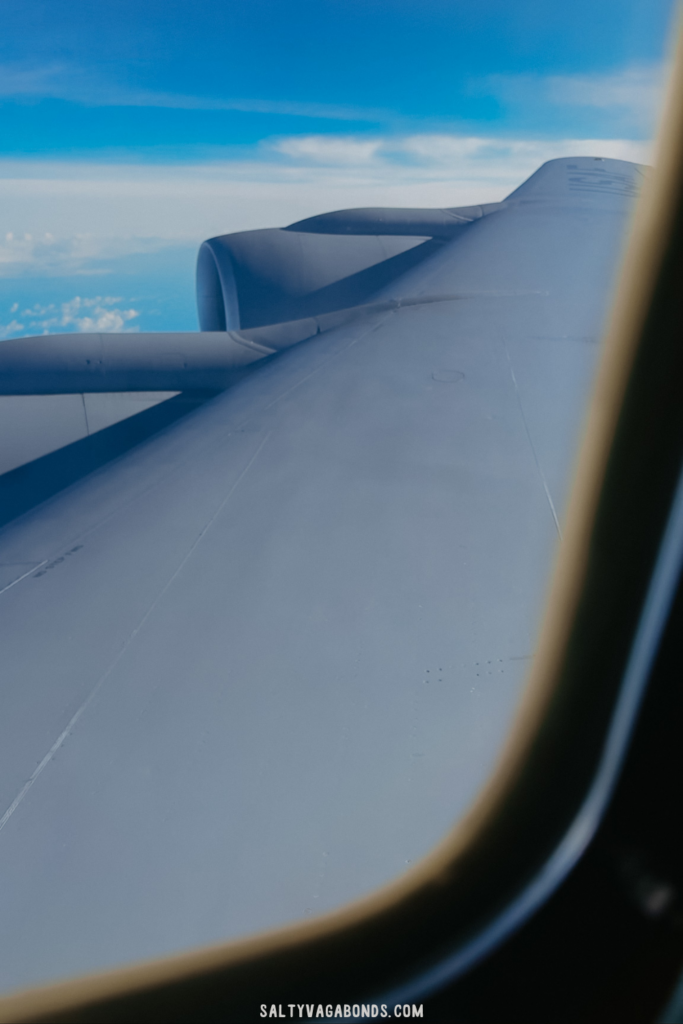
Fifth Step
After Identifying the routes and patterns, focus on the roll call times and the dates. If you are following the planes across the Pacific in the schedules then you will notice that after a long duty day the plane will be on the schedule the day after it landed or the subsequent day or it could be its final destination for a week.
Lastly, if this plane started its journey from Travis, you can probably count on it going back to Travis. But who knows when.
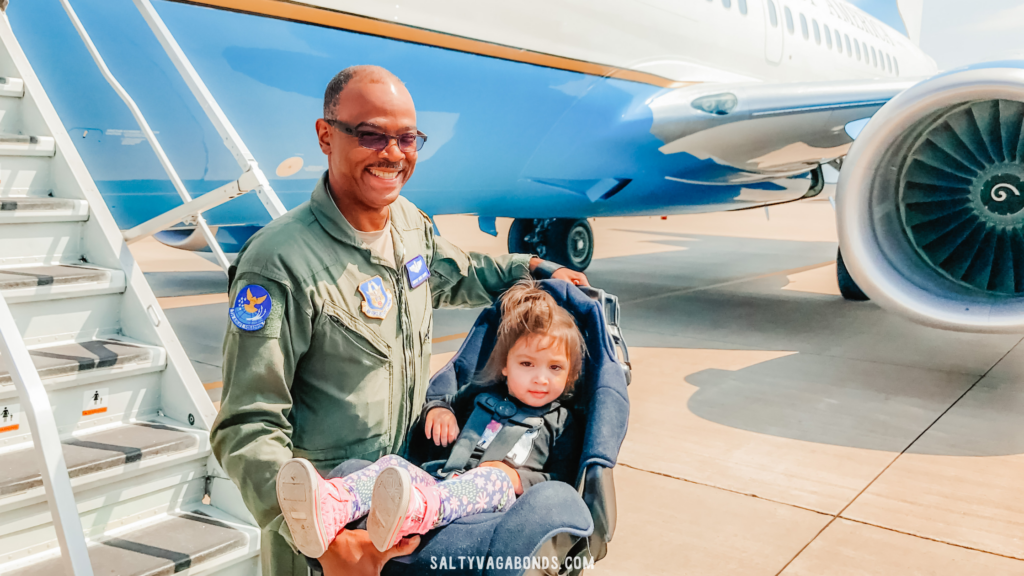
Sixth Step
And if you are actually on the flight you can ask the crew where they plan to stop for the night and how long their crew rest will be. For example, we were on a flight that was heading to a spicy country afterward, so they definitely weren’t taking Category VI passengers. You can also inquire about their schedule for the next few days to see if you might get lucky and catch a flight to the next location that they are going to.
Final Thoughts and Analysis
So basically i’m trying to express that you are trying to piece together flight duty days, fuel stop locations and crew rest locations just like an aircraft dispatcher working behind the scenes. You want to piece them together and look at the schedules to understand where the flight is continuing to, by looking at the Space-A Flight Schedules.
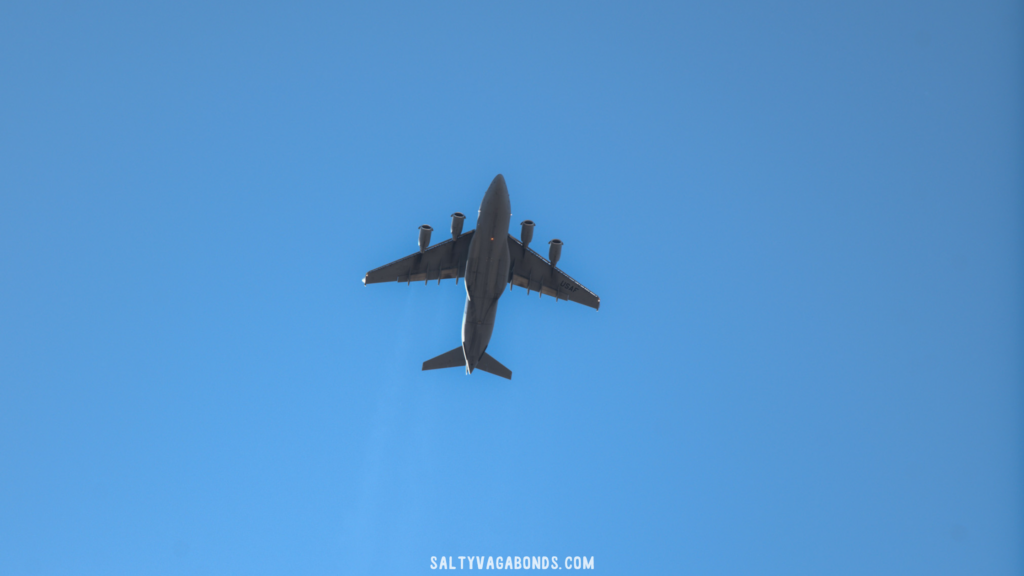
What to Remember:
If the crew hasn’t hit their duty time limit for the 24-hour period, they can continue to the next location, like Guam in this example. The flight to Guam takes about 6 hours and 45 minutes.
So, if the first flight was 4.5 hours long, the crew would still have 7.5 hours of duty time left. This means they could make it to Guam without exceeding their duty time, but without a standby crew onboard, they’ll need to take a mandatory rest period before continuing to Japan.
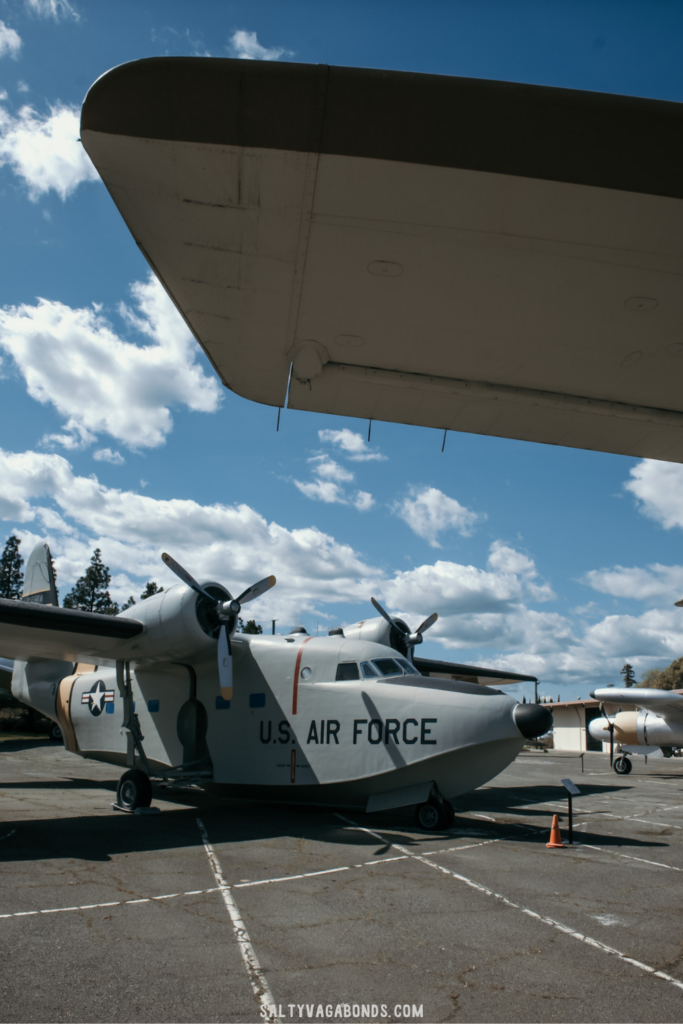
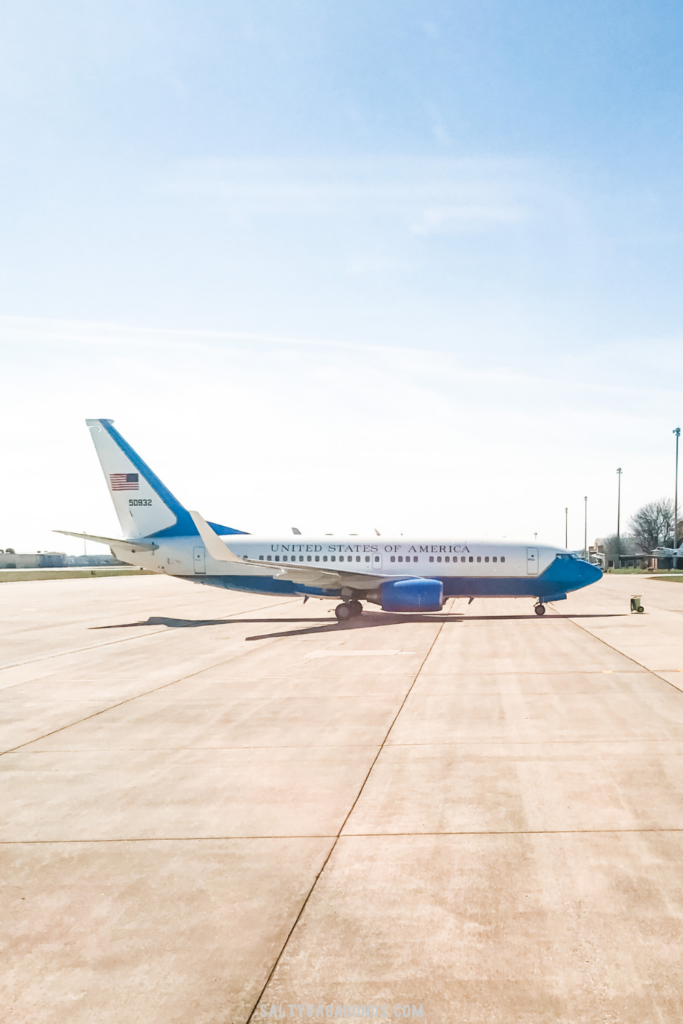
Knowing the crew rest times can give you an idea of how long the plane might stay at a location after a long flight or one with multiple destinations. Understanding how long the flights take can also help you figure out where the overnight stops are likely to happen and you can piece this together with the schedules from the different Space A locations.
Think of crew rest as an essential part of the flight. If the crew uses up all their duty time, they must stop for rest, which will be reflected in the flight schedules. You can piece this together by examining each schedule separately and making an educated guess.
Regional Routes and Schedules
Understanding transportation and air travel is crucial. Think of it like a regional supply chain. By identifying the major hubs, you can piece together the schedules more effectively and make better use of them.
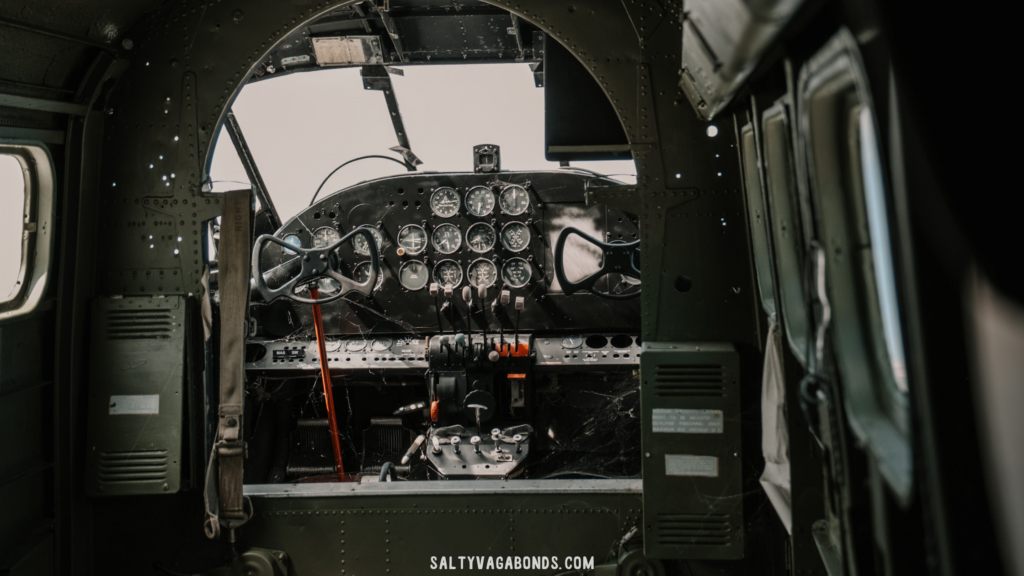
Flights from the West Coast of the USA typically head to Asia. Although less common, there are occasional direct flights to Europe from California and Washington.
On the other hand, flights from the East Coast generally go to Europe and the Middle East. For instance, Norfolk services NAS stations in the Mediterranean Sea. This is why terminals are categorized on the amc website by theater region.
Seasonal Space-A Flight Schedules
By keeping an eye on seasonal schedules, you might notice patterns. For flights across the Pacific Ocean, jets often fly north to Anchorage to make a nonstop journey to Japan, avoiding the jet stream for better fuel efficiency during winter. On the return trip, planes use the jet stream to increase ground speed and save on fuel.
When watching flights from JBLM, you might see them take a northern route with a fuel stop in Anchorage or Fairbanks before heading to Japan during winter. In summer, they might fly directly or stop in Hawaii or Midway instead. This is because the jet stream, which usually has strong winds, shifts north to Alaska in the summer, making stops there less beneficial. All airline carriers utilize this advantage.
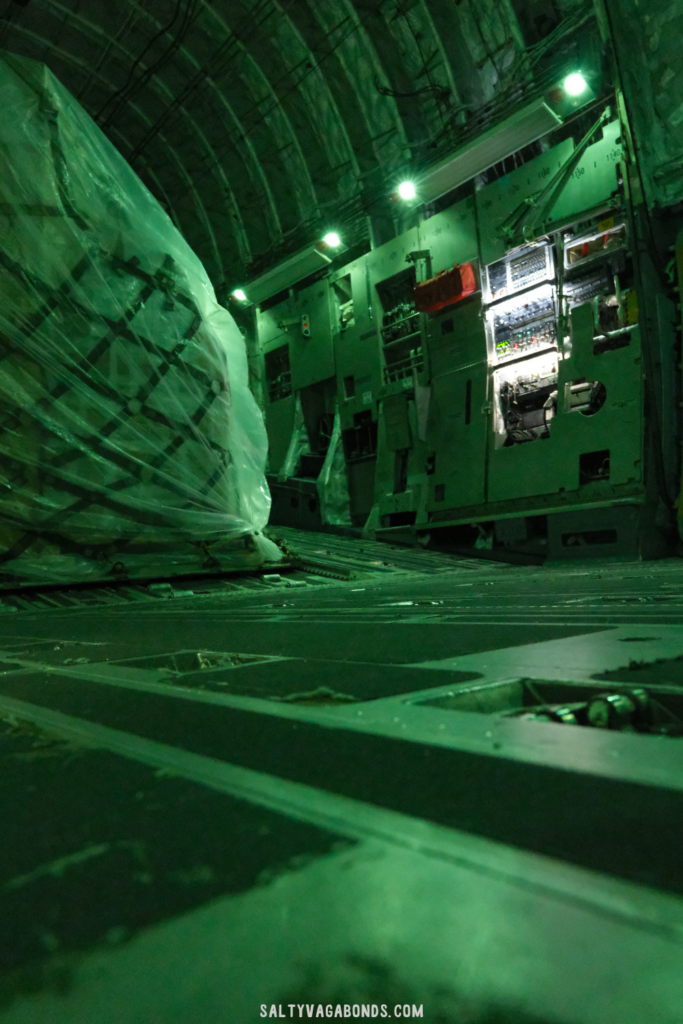
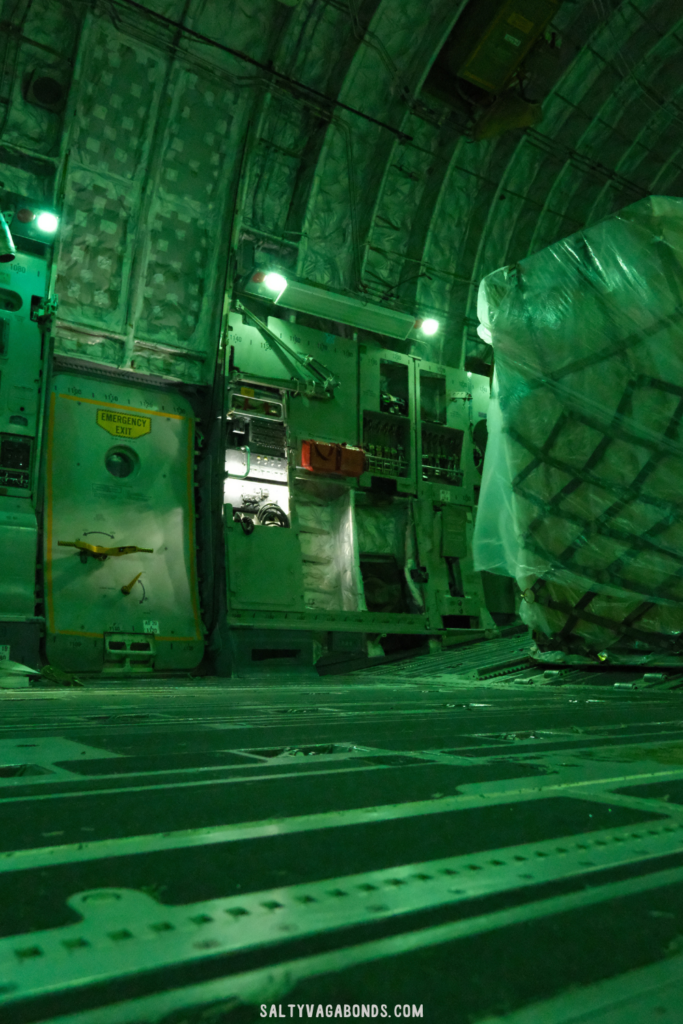
ATOC (Advanced Tactical Operations Center)
None of this would be possible without ATOC (Advanced Tactical Operations Center)! They’re like the brain of the flight line, ensuring everything runs smoothly and controlling the release of Space-A seats. Be sure to give them a big thank you if you see them!
We learned from a sergeant that the flight crew don’t always have to take passengers. They can call ATOC and decide not to allow passengers on a flight if they prefer not to have them on board. So, even if a flight looks good on the schedule, this can be a wildcard.
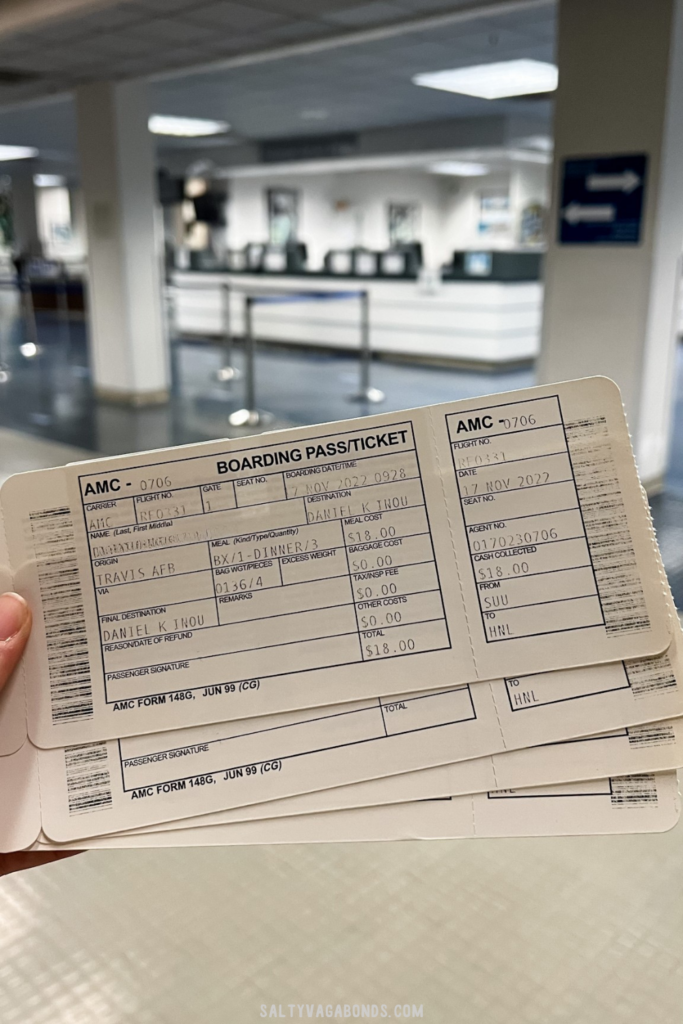
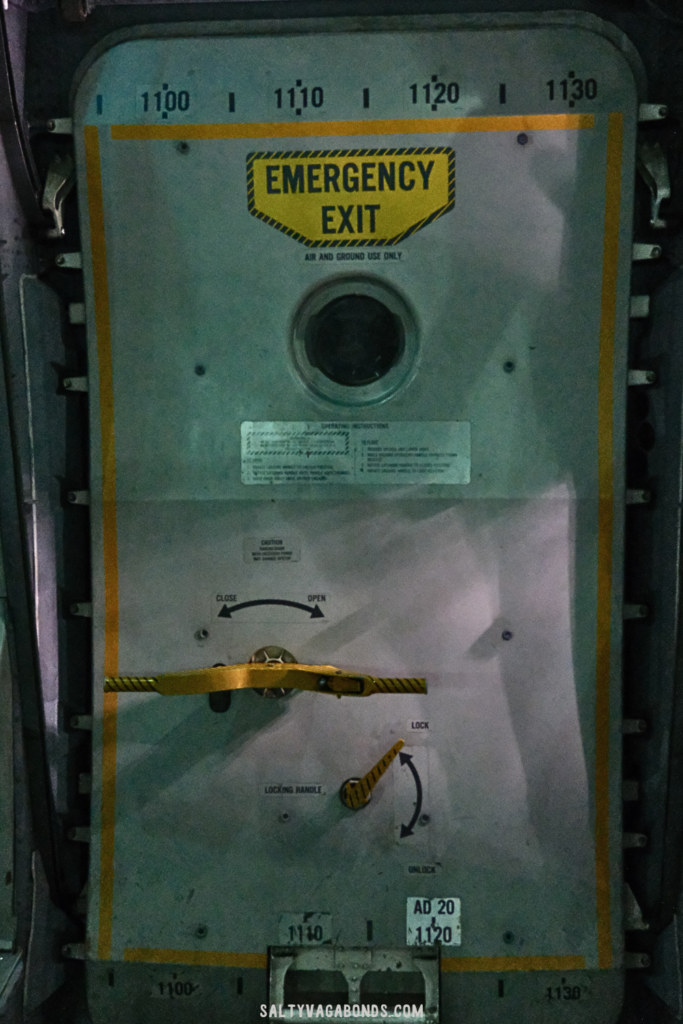
Our Personal Experience
This happened to us at Travis Air Force Base. We were tracking a flight listed as a nonstop to Germany, which had been posted on the first day of the 72-hour schedule. Over time, we made multiple stops at the Space-A terminal to check the flight’s status and see if it might leave early, even a full day ahead of schedule.

The civilian employees were a huge help in catching this flight. ATOC had removed it from the schedule on the day of departure and dropped all the seats at 4 a.m. that morning, with a roll call around 8 a.m.
We were already at the airport when this happened, and thanks to their assistance, we got on the flight at the last minute and were off the ground less than an hour after going through security. So, you never really know what will happen!
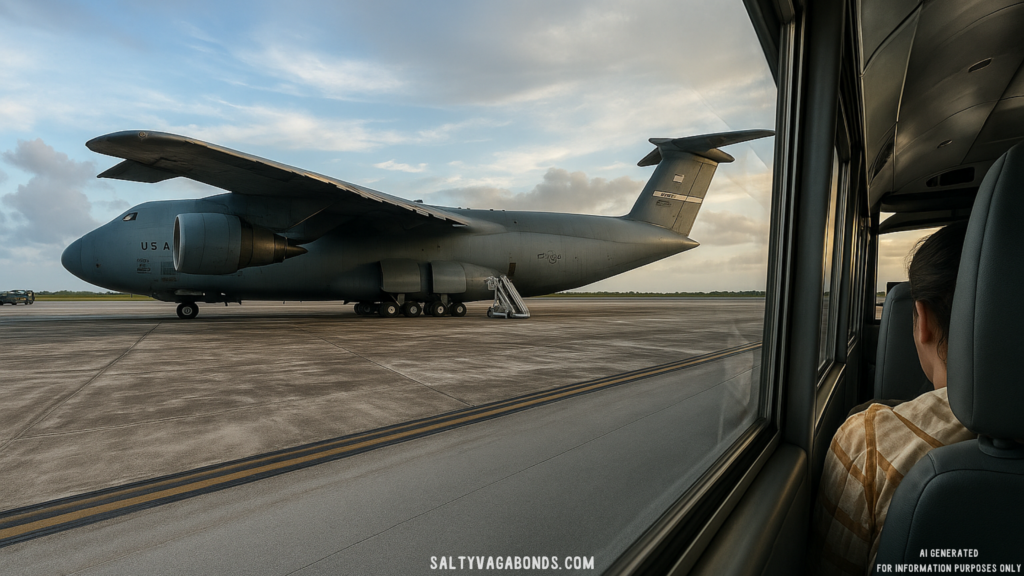
Final Thoughts From The Sky
Remember, Space-A flight schedules can be very dynamic and the mission is always the priority. Understanding this is crucial for making the most of Space-A travel, as nothing is guaranteed. Every flight we catch feels like a huge win, and we’re always grateful for the opportunity.
This post might be a bit lengthy, but understanding the scenarios, rules, and regulations helps explain why the schedules are the way they are. With this knowledge, you can use the schedule to plan an epic Space-A adventure and travel the world like us!
Leave a Reply Cancel reply
You must be logged in to post a comment.
Our Story
Message in a
bottle?
Join our Newsletter! We're sharing monthly tips & tricks for travel, discounts & more.
Travel Blogs
About us
Contact
Tips & Tricks
hello@saltyvagabonds.com
Link in Bio
Work With Us
SpaceA Military Flights
Santa Fe Travel Guide
Visit Disney Aulani Hawaii
Family Packing Guide
Our Photography Gear
Plan Your Travel
See you soon!
Planning
Tips
Destinations
Oceania
North America
Europe
Asia
Bali
Japan
Korea
Malaysia
singapore
Thailand
Vietnam
France
U.K.
Germany
Canada
Mexico
usa
French Polynesia
Micronesia
Hawaii
Guam
Indonesia
All Travel Blogs
Destinations
Planning
Tips
Destinations
Travel Tips
Planning
About us
Hotels
via Booking.com
Car Rental
Book a Bus/Train/Transfer
Find Cheap Flights
Get ESIM or SIM Card
Easy Currency Exchange
Book Tours & Attractions
Get Travel Insurance
via Discover Cars
via Skyscanner
via 12Go
via Wise
via Viator
via Visitors Coverage
via SimOptions
This post was thorough and well put together. Thanks so much for highlighting all of the details.
-navy veteran
You are very welcome. I do have a few updates to add to this post and will be doing that shortly.
-Alex
Thank you for the detailed information. Do you think it is possible for a family of 7 to fly to Hawaii?
Absolutely! We just flew back from Hawaii a few months ago with a family of 7 or 8 in their party (can’t remember the exact number, but it was a big crew 😄). If you’re traveling during PCS season, it can definitely be trickier and a little frustrating with a group that size, but it’s still totally doable. We’ve also seen flights to Hawaii in the past with tons of open seats. Monitoring the 72-hour schedule and checking roll calls ahead of time will give you a good idea of demand and seat availability for the flight you want to catch.